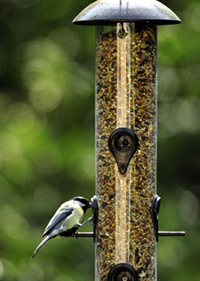Savvy pet department managers should be taking full advantage of the ‘noise’ surrounding this week-end’s Big Garden Bird Watch.
 No, that's not about watching BIG garden birds – it’s the RSPB’s annual ‘audit’ of the UK’s garden bird population, in which the public are the ‘auditors’.
No, that's not about watching BIG garden birds – it’s the RSPB’s annual ‘audit’ of the UK’s garden bird population, in which the public are the ‘auditors’.
Homeowners and bird lovers across the country are called upon to spend one hour over the weekend (24-25 January) and record the different species of birds that visit their gardens.
The RSPB have been asking the public to register for this year’s Watch and report back with the approximate number and variety of birds they see. There are events across the country run by RSPB members, including quizzes, family outings etc, creating plenty of opportunities for garden centres to promote bird feeding.
The RSPB have been collating numbers and monitoring trends since 1979 to help better understand which birds are on the decline and how we can help to prevent the fall. Since then, over 7 million have been counted. Yoo could flag up the top 10 most common garden birds spotted in 2014 on a chalk board this week-end as a reminder – and, of course, point out which feeds on your shelves attract which species.
1. House sparrow
2. Blue tit
3. Starling
4. Blackbird
5. Woodpigeon
6. Chaffinch
7. Goldfinch
8. Great tit
9. Collared dove
10. Robin
Although the house sparrow is still at number one, this cheerful chap has remained on the red-list as their numbers were still down by a massive 62% from the first Big Garden Bird Watch. Unfortunately, it’s the kind of decline seen in many of our common birds.
As the RSPB points out, there are lots of things people can do to encourage birds into the garden, particularly at this time of year when food in nature is scarce. Providing plenty of good quality food on bird tables, and hanging fat balls is a sure way of drawing them in. Retaining some “untidy plant” areas over the winter months also encourages insects, another important source of food – a good tip to highlight on your wild bird display.